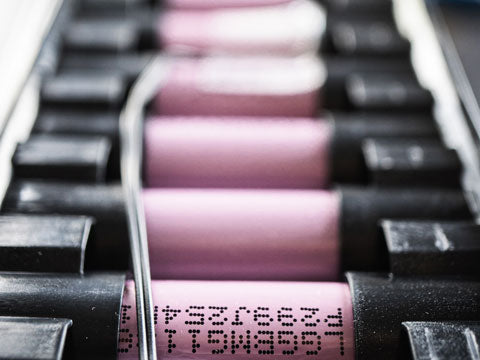The electrolyte is generally composed of electrolyte lithium salt and high-purity organic solvent, which is the carrier of lithium ion migration and charge transfer. From the perspective of function, the electrolyte is the key material that affects the performance of high voltage and high specific energy of lithium batteries. In recent years, with the increasing demand for lithium batteries in new energy vehicles, energy storage and other applications, the production of electrolytes in my country is also increasing. However, at the same time, the continuous development and iteration of new technologies and processes for lithium batteries have also put forward higher requirements for the upgrade applicability of electrolytes in terms of high nickel, high voltage, high specific energy, and high safety.
For example, high-nickel cathode materials have become the mainstream technical route of current high-energy-density lithium batteries. With the increasing proportion of nickel and the use of silicon-carbon anodes, new challenges have been brought to the R&D and production of electrolytes.
At the same time, in order to alleviate “range anxiety”, the energy density of lithium batteries continues to increase, and the voltage will also increase. The higher the voltage, the stronger the decomposition ability of the electrolyte, or adversely affect the performance and safety of the lithium battery.
In addition, the storage performance, cycle performance and safety performance of lithium batteries under high temperature, fast charging and other environments are closely related to the performance of the electrolyte.
The above-mentioned industry pain points are more complicated to solve, and the technical threshold is high. Faced with the development trend of new technologies, it is necessary to tackle key problems in electrolyte-related technologies to meet the new requirements of new material systems for electrolytes.
1. High voltage
In recent years, new high-voltage cathode materials such as lithium nickel manganate and layered lithium-rich manganese-based materials have been gradually developed, and their discharge voltages can reach more than 5V, but they have not yet been commercialized. The most important reason is that the working voltage of current commercial electrolytes cannot be matched.
The current research on electrolytes mainly uses LiPF6 as the lithium salt and single or mixed carbonate solvents as the main solvent, mainly including EC, DMC, EMC, DEC and PC. When the working voltage is greater than 4.3V, the traditional electrolyte usually decomposes. This is because the commonly used organic carbonate solvents, such as chain carbonates DMC, EMC, DEC, and cyclic carbonates PC, EC, etc. unstable down.
At present, more research is to improve the working voltage of the electrolyte by using high-voltage materials, including the use of high-pressure solvents, high-pressure additives and high-concentration lithium salt electrolytes.
High-pressure solvents mainly include fluorinated solvents, sulfone-based solvents, nitrile-based solvents, and ionic liquids. Compared with high-pressure solvents, high-pressure additives are more popular due to their less dosage, obvious effect and low cost. At present, there are mainly boron additives, benzene derivatives and heterocyclic additives, and phosphite additives. In addition, additives such as ethers, sulfur-containing, silicones, and ionic liquids have also been widely studied and applied. High-concentration lithium salt electrolyte refers to an electrolyte with a lithium salt concentration of more than 3 mol/L. This electrolyte has excellent oxidation/reduction resistance, can prevent corrosion of aluminum current collectors, and has high rate performance of batteries. The lithium salt with the highest commercial application at present is LiPF6, which is easily decomposed in the presence of trace water or at high temperature to generate HF, which destroys the electrode structure and cannot meet the requirements of high-pressure and high-safety electrolytes, so it needs to be modified. New lithium salts such as lithium imide (LiFSI) and lithium bistrifluoromethanesulfonimide (LiTFSI) have attracted much attention due to their good thermal stability and insensitivity to moisture.
2. High power
For power batteries, realizing fast charging is also an important direction for the development of electrolytes.
The performance of high-power electrolytes for lithium batteries is mainly studied in two aspects: first, the charge transfer resistance of the SEI film increases under high-rate charging, which increases the electrode polarization during the charging process; thirdly, under the condition of high-rate charging, lithium batteries are charged at constant current. Lithium precipitation is easy to occur in the later stage, resulting in deterioration of the SEI film condition and deterioration of the battery performance. Therefore, first, through the optimization of lithium salt, adding lithium salt that is conducive to high-rate charge and discharge can improve the high-power performance of the battery to a certain extent; second, by adding high-power performance additives, the effect is better than EC film formation by adding Additives reduce the charge transfer resistance of the electrode interface under high-rate charge and discharge, or add lithium salt deposition improvers to prevent lithium dendrite growth during high-rate charge and improve the high-power performance of the battery.

